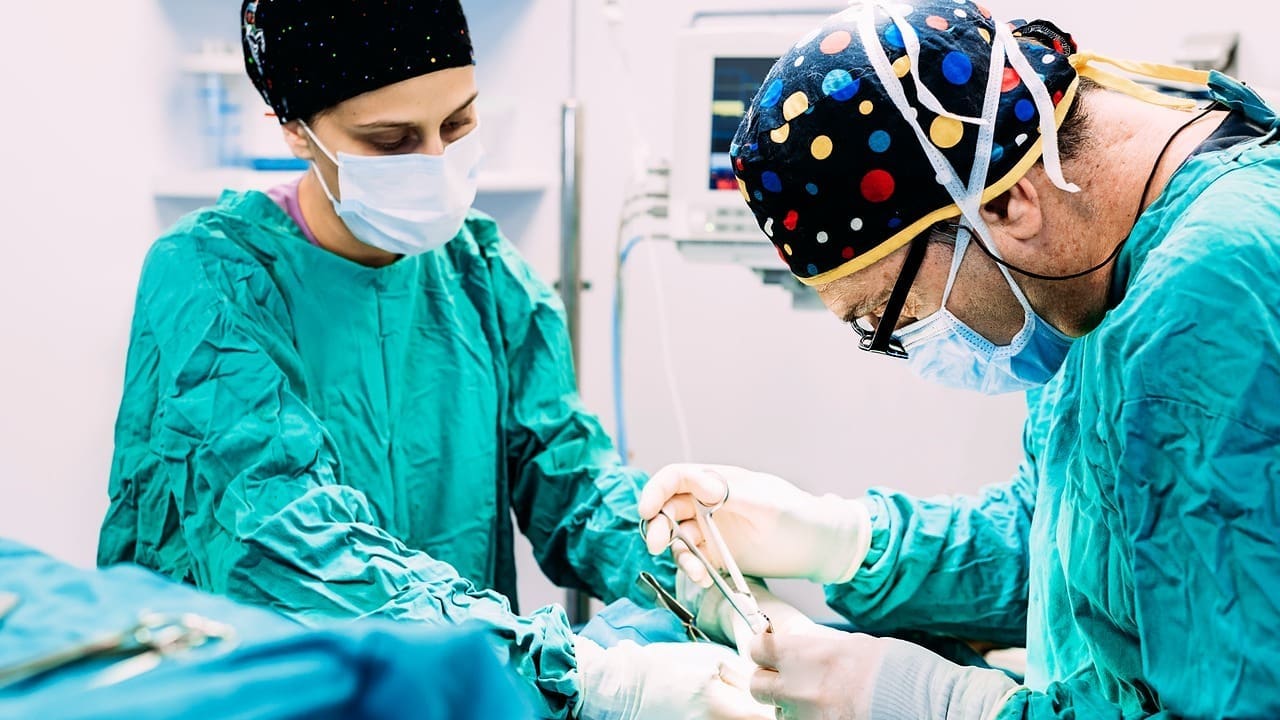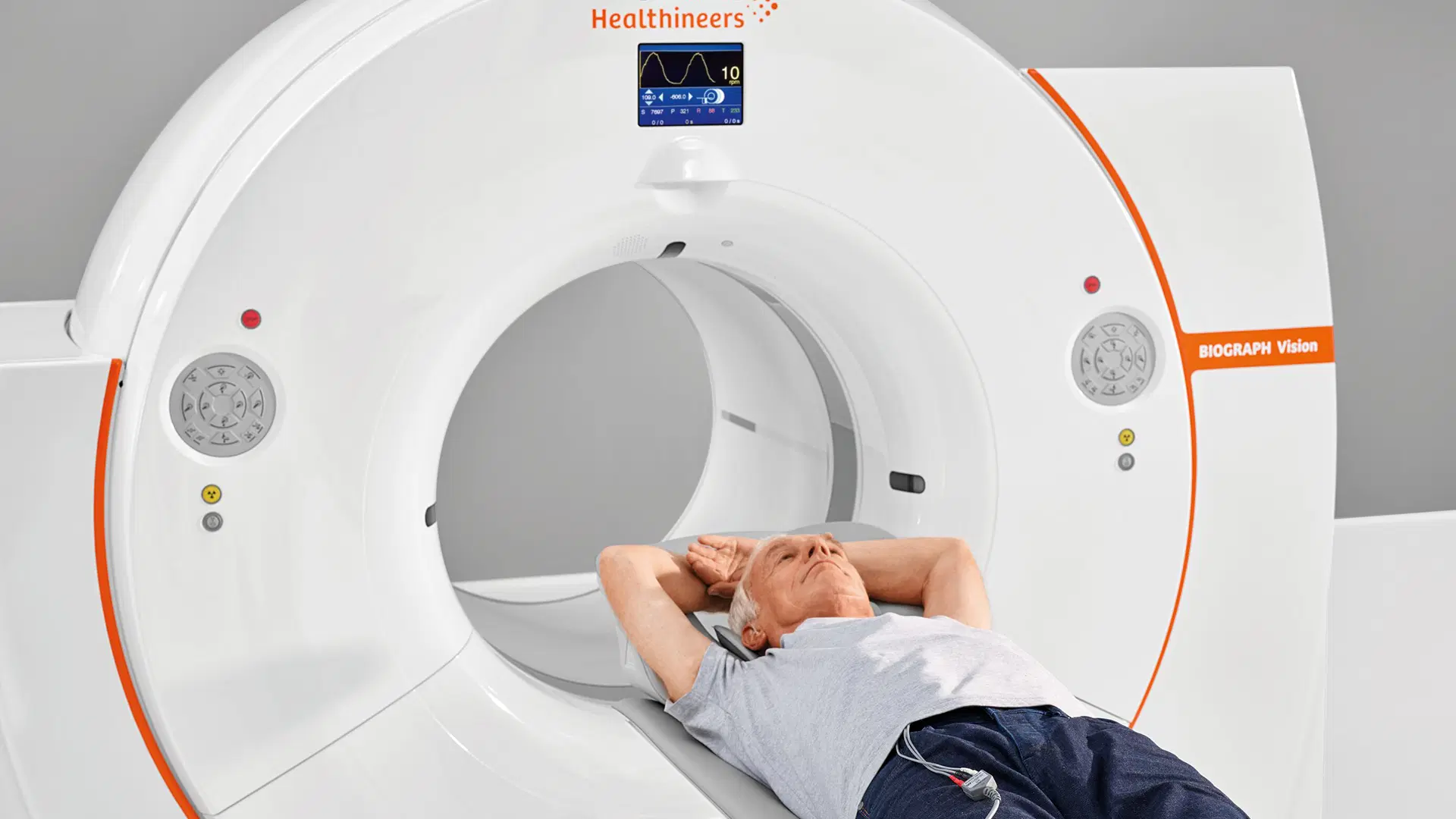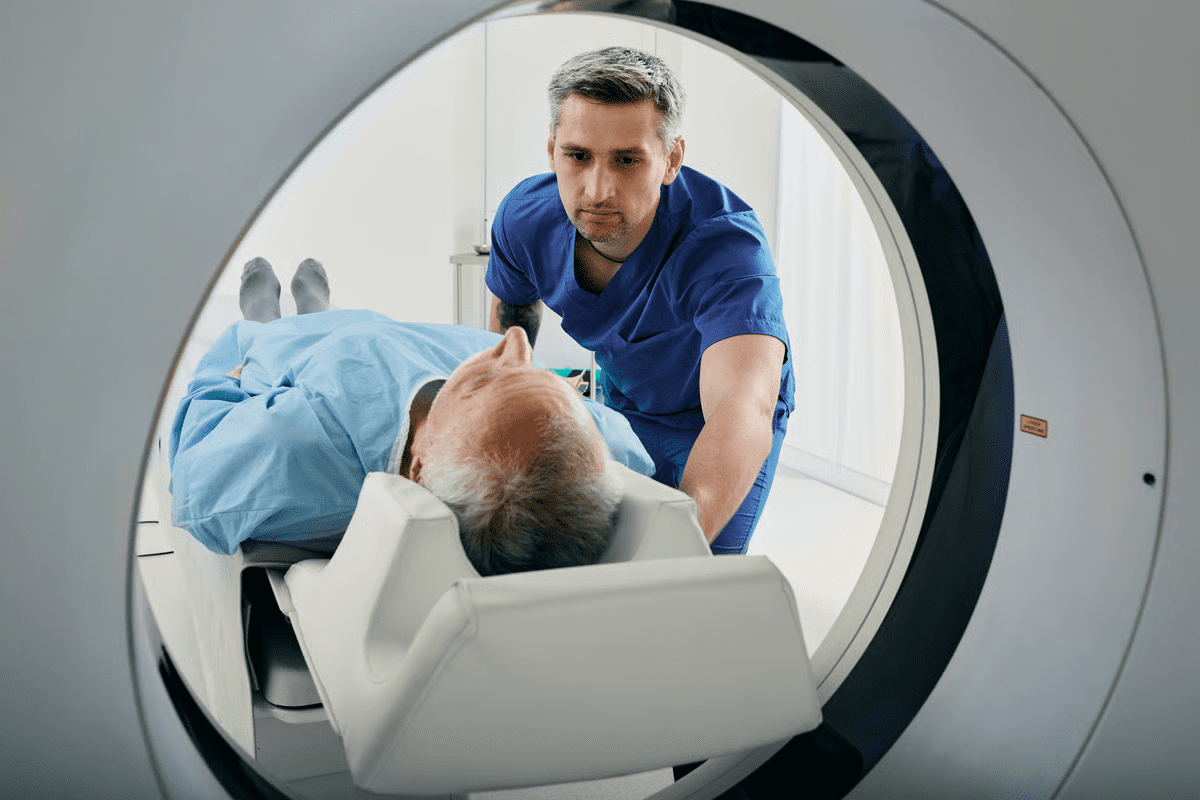Last Updated on November 26, 2025 by Bilal Hasdemir

Nearly 1 in 8 men will be diagnosed with prostate cancer at some point in their lives, making it a big health concern. The good news is that prostate cancer usually grows slowly, which means with early detection, is prostate cancer curable becomes a realistic and hopeful question for many patients. However, some types can be aggressive and spread quickly. Early diagnosis is key to long-term survival, so it’s important for men to know their risk factors and screening options.
Key Takeaways
- Prostate cancer is a common health issue among men.
- Early detection is critical for effective treatment.
- The disease can have varying growth rates, impacting treatment approaches.
- Understanding risk factors can help in prevention and early diagnosis.
- Screening options are available for early detection.
Understanding Prostate Cancer: Types and Prevalence
It’s important to know about the different types of prostate cancer and how common they are. This knowledge helps doctors diagnose and treat the disease better. Prostate cancer is a big health issue in the U.S., affecting many men each year.
What Is Prostate Cancer?

Prostate cancer happens when cells in the prostate gland grow out of control, forming tumors. The prostate gland is a small gland below the bladder and in front of the rectum in men. It’s key to the male reproductive system.
The Four Types of Prostate Cancer
There are four main types of prostate cancer, each with its own traits.
Adenocarcinoma
Adenocarcinoma is the most common type, making up about 90% of cases. It starts in the glandular cells of the prostate.
Small Cell Carcinoma
Small cell carcinoma is rare but aggressive. It grows fast and is often found late.
Neuroendocrine Tumors
Neuroendocrine tumors are rare and can be hard to diagnose. They can be benign or cancerous.
Transitional Cell Carcinoma
Transitional cell carcinoma, or urothelial carcinoma, starts in the lining of the urethra. It’s not very common.
Prevalence Rates in the United States
Prostate cancer is common among men in the U.S. About 80% to 85% of cases are found in the local or regional stages.
| Type of Prostate Cancer | Prevalence |
| Adenocarcinoma | 90% |
| Small Cell Carcinoma | Rare |
| Neuroendocrine Tumors | Rare |
| Transitional Cell Carcinoma | Relatively Rare |
Why Prostate Cancer Is So Common
Many things can make prostate cancer more likely, like age, family history, and genetics.
Risk Factors and Genetic Predisposition
Things like age, ethnicity, family history, and certain genes can raise your risk. Men with a family history or certain genes are more at risk.
Early Detection and Diagnosis

Early detection and accurate diagnosis are key to managing prostate cancer. Prostate cancer often has no symptoms in its early stages. Regular screening is vital to catch the disease before symptoms appear.
Recognizing the Signs and Symptoms of Prostate Cancer
Prostate cancer may not show symptoms early on. But, there are warning signs men should know. Spotting these signs can lead to an early doctor’s visit and diagnosis.
Early Warning Signs
Some early signs of prostate cancer include:
- Difficulty urinating or a weak urine flow
- Frequent urination, specially at night
- Blood in the urine or semen
- Pain or stiffness in the hips, pelvis, or thighs
When to See a Doctor
If you notice any of these symptoms, see a doctor. Early detection can greatly improve treatment success.
“The earlier prostate cancer is detected, the better the chances for successful treatment and survival.”
Screening Methods and Recommendations
There are several ways to detect prostate cancer. Each method has its own guidelines and recommendations.
PSA Testing
The PSA test checks PSA levels in the blood. High levels might mean prostate cancer, but other issues can also raise them.
Digital Rectal Examination
A DRE lets a healthcare provider feel the prostate gland for any oddities. It’s not as good as the PSA test for early detection but adds to the information when used together.
Biopsy Procedures
If PSA or DRE results hint at cancer, a biopsy might be needed. This involves taking small tissue samples from the prostate for examination.
| Screening Method | Description | Recommendations |
| PSA Testing | Measures PSA levels in the blood | Discuss with your doctor starting at age 50 |
| Digital Rectal Examination | Feeling the prostate for abnormalities | Part of a routine physical exam |
| Biopsy | Removing prostate tissue for examination | If PSA or DRE results are abnormal |
The Importance of Early Detection
Early detection of prostate cancer greatly improves treatment success. Early detection means the cancer is more likely to be treated effectively, reducing the chance of it spreading.
Knowing the importance of early detection and the screening options available empowers men to take care of their health. Regular screenings and quick action on any symptoms can significantly impact prostate cancer management.
Staging of Prostate Cancer and Its Impact on Prognosis
Staging prostate cancer is key to knowing how far the disease has spread. It affects both how likely you are to recover and what treatments you can have. Knowing the stage helps doctors and patients make the best choices.
The TNM Staging System Explained
The TNM system is a way to measure how far prostate cancer has spread. It looks at the tumor size (T), nearby lymph nodes (N), and if it has spread to other parts of the body (M).
| TNM Component | Description |
| T (Tumor) | Size and extent of the main tumor |
| N (Node) | Involvement of nearby lymph nodes |
| M (Metastasis) | Presence of distant metastasis |
The TNM system provides a detailed framework for assessing the spread of prostate cancer, which is critical for planning treatment.
Gleason Score and Its Significance
The Gleason score rates how aggressive prostate cancer is. It’s based on biopsy samples and ranges from 2 to 10. Higher scores mean the cancer is more aggressive.
“The Gleason score is a powerful predictor of prostate cancer behavior, helping clinicians to stratify patients into different risk categories.”
The Gleason score is important. It helps doctors predict how the cancer will behave and choose the right treatment.
At What Stage Is Prostate Cancer Not Curable?
Prostate cancer is not curable when it spreads to distant parts of the body. This is called stage IV cancer. At this point, the cancer is no longer just in the prostate gland.
How Stage Affects Treatment Decisions
The stage of prostate cancer greatly affects treatment choices. For early-stage cancer, treatments like active surveillance, surgery, or radiation might be options. But for advanced stages, treatments like hormone therapy or chemotherapy are often needed.
- Early-stage prostate cancer: Active surveillance, surgery, or radiation therapy
- Advanced prostate cancer: Hormone therapy, chemotherapy, or clinical trials
Treatment planning is highly individualized. It considers the stage, Gleason score, and the patient’s overall health.
Is Prostate Cancer Curable? Examining the Evidence
To know if prostate cancer is curable, we need to look at the latest research. The chance of curing it depends on several things. These include the cancer’s stage, the patient’s health, and the cancer’s type.
Defining “Cure” in the Context of Cancer
The word “cure” in cancer means getting rid of the disease forever. But, in real life, we often aim for long-term survival and symptom control.
Survival Rates by Stage
Survival rates for prostate cancer change a lot based on when it’s found. The 5-year relative survival rate is a key measure of how well someone might do.
Localized Prostate Cancer
Men with localized prostate cancer have a 5-year survival rate close to 100%. This means they have a very good chance of living at least 5 years after finding out they have cancer.
Locally Advanced Prostate Cancer
For locally advanced prostate cancer, the 5-year survival rate is high but a bit lower than for localized cancer. Treatments like surgery and radiation can help manage the disease well.
Metastatic Prostate Cancer
Metastatic prostate cancer has a lower 5-year survival rate. But, thanks to new treatments, survival chances have gotten better over time.
Factors That Influence Curability
Many things can affect how curable prostate cancer is. These include age, health, genetics, and how well the body responds to treatment.
Age and Overall Health
Age and health are big factors in treating prostate cancer. Older people or those with serious health issues might face more risks and lower survival chances.
Genetic Factors and Family History
Genetics and family history can change the risk of getting prostate cancer and how aggressive it might be. Men with a family history of prostate cancer might need to start screening earlier.
Response to Treatment
How well the body responds to treatment is key to long-term success in fighting prostate cancer. Good treatment can greatly improve survival rates.
In summary, whether prostate cancer is curable depends on many factors. Knowing these and the latest research is key to making smart treatment choices.
Treatment Options for Prostate Cancer
Prostate cancer treatment varies based on the cancer’s stage and the patient’s health. This personalized approach helps improve treatment success.
Active Surveillance and Watchful Waiting
For those with low-risk prostate cancer, active surveillance is often chosen. It involves regular checks like PSA tests and biopsies. Treatment starts only if the cancer grows more aggressive.
Watchful waiting is for older men or those with serious health issues. It aims to manage symptoms and improve life quality, not to cure cancer.
Surgical Interventions
Surgery is a common treatment for prostate cancer, mainly for localized disease. The main surgery is:
Radical Prostatectomy
Radical prostatectomy removes the prostate gland and some surrounding tissue. It can be done through open, laparoscopic, or robotic-assisted methods, each with its own benefits.
Minimally Invasive Techniques
Minimally invasive surgical techniques like laparoscopic and robotic-assisted surgery offer smaller incisions and quicker recovery. They are less invasive than traditional open surgery.
Radiation Therapy
Radiation therapy uses high-energy rays to kill cancer cells. There are several types:
External Beam Radiation
External beam radiation therapy (EBRT) targets the prostate gland from outside the body. New techniques have made it more precise and reduced side effects.
Brachytherapy
Brachytherapy places small radioactive seeds in the prostate gland. It delivers a high dose of radiation locally, protecting surrounding tissues.
Long-term Effects of Radiation
Radiation therapy is effective but has long-term side effects like urinary and bowel issues. Discussing these with a healthcare provider is important.
Hormone Therapy
Hormone therapy, or androgen deprivation therapy, lowers male hormones that fuel prostate cancer growth. It’s often used with other treatments.
Chemotherapy and Immunotherapy
Chemotherapy kills cancer cells that have spread. Immunotherapy uses the body’s immune system to fight cancer. Both are explored for advanced prostate cancer.
Emerging Treatments and Clinical Trials
Prostate cancer treatment is constantly evolving. Clinical trials are testing new therapies like targeted therapy and advanced immunotherapies. Joining a clinical trial can offer access to new treatments.
Side Effects and Quality of Life Considerations
Prostate cancer treatment can greatly affect a patient’s quality of life. It’s important to know about these side effects. This knowledge helps patients make better choices about their care.
Common Side Effects of Prostate Cancer Treatments
Prostate cancer treatments can cause many side effects. These include:
- Sexual dysfunction
- Urinary incontinence
- Bowel problems
Sexual Dysfunction
Sexual problems are common, mainly after surgical interventions or radiation therapy. These issues can be erectile dysfunction and a lower sex drive.
Urinary Incontinence
Urinary incontinence can happen due to damage to the muscles and nerves. This damage occurs during treatment. To manage it, patients may need exercises, lifestyle changes, and sometimes more medical help.
Bowel Problems
Bowel issues, like diarrhea or constipation, can occur, often after radiation therapy. Changing your diet and taking medications can help manage these problems.
Managing Treatment Side Effects
Dealing with prostate cancer treatment side effects requires a variety of approaches. This includes:
- Lifestyle changes
- Medications for specific side effects
- Support from healthcare professionals
Long-term Quality of Life After Treatment
The long-term effects of prostate cancer treatment on quality of life differ for everyone. The type of treatment and the patient’s health play big roles.
Untreated Prostate Cancer: Risks and Outcomes
Not treating prostate cancer can lead to serious health problems. These include the cancer spreading and growing. Knowing these risks is key to making the right treatment choices.
Advanced and Metastatic Prostate Cancer: Is It Stil Treatable?
Advanced and metastatic prostate cancer need a detailed treatment plan. Despite the hurdles, many options can help manage the disease and enhance life quality.
Treatment Options for Stage 4 Prostate Cancer
Stage 4 prostate cancer, where cancer spreads to distant areas, is tough to treat. Yet, treatments like hormone therapy, chemotherapy, and immunotherapy are available.
Treatment Options:
- Hormone therapy to lower testosterone levels
- Chemotherapy to kill cancer cells
- Immunotherapy to strengthen the immune system
- Palliative care to manage symptoms
The American Cancer Society reports a 28 percent five-year survival rate for distant-stage prostate cancers. This statistic shows the need for ongoing research and better treatments.
| Treatment | Purpose | Common Side Effects |
| Hormone Therapy | Reduce testosterone levels | Hot flashes, fatigue |
| Chemotherapy | Kill cancer cells | Nausea, hair loss |
| Immunotherapy | Boost immune system | Fatigue, immune reactions |
Bone Metastasis: Challenges and Approaches
Bone metastasis is a common issue in advanced prostate cancer, causing a lot of suffering. Managing it requires a team effort, including radiation therapy, bone-modifying agents, and pain control.
Palliative Care and Pain Management
Palliative care is vital for managing symptoms of advanced prostate cancer, improving life quality. Pain management is key, using medicines and alternative therapies.
“Palliative care is not just about managing pain; it’s about improving the quality of life for both the patient and the family.”
Can Advanced Prostate Cancer Go Into Remission?
Remission in advanced prostate cancer is complex. Yet, treatments can control the disease for a long time. Remission chances depend on metastasis extent and patient health.
Factors Influencing Remission:
- Extent of metastasis
- Patient’s overall health
- Response to initial treatment
Living With and Beyond Prostate Cancer
Prostate cancer treatment is just the start. It opens a new chapter in life. This chapter includes follow-up care, managing recurrence, using support resources, and making lifestyle changes to prevent it.
Follow-up Care and Monitoring
After treatment, follow-up care is key. It helps monitor health and catch recurrence early. This care includes regular check-ups and tests like PSA tests.
Follow-up Care Schedule:
| Time Frame | Test/Follow-Up |
| First 2 years | PSA tests every 3-6 months |
| 2-5 years | PSA tests every 6-12 months |
| After 5 years | Annual PSA tests |
Dealing With Recurrence
Dealing with recurrence can be tough. But, there are treatment options based on the recurrence’s location and extent. It’s important to talk about these options with your healthcare provider.
“The key to managing recurrence is early detection and a tailored treatment plan.”
Support Resources for Patients and Families
Prostate cancer affects not just patients but also their families. Support resources like counseling, support groups, and educational materials can greatly improve life quality.
- Support groups for patients and families
- Counseling services
- Educational materials on managing side effects
Lifestyle Changes That May Prevent Recurrence
Some lifestyle changes can lower recurrence risk. These include dietary changes, more physical activity, and stress management.
Dietary Recommendations
Eating more fruits, vegetables, and whole grains, and less processed foods and red meat, may help. Foods high in omega-3 fatty acids are also beneficial.
Regular exercise improves health and may lower recurrence risk. Walking, cycling, or swimming are good choices.
Stress Management
Chronic stress is bad for health. Stress management techniques like meditation, yoga, or deep breathing can help.
By making these lifestyle changes and using support resources, people can improve their life quality and lower recurrence risk.
Conclusion: The Future of Prostate Cancer Treatment
The world of prostate cancer treatment is changing fast. This change comes from new research and better care methods. Early detection and diagnosis are key to better patient outcomes.
New treatments and technologies are on the horizon. They promise to make patient care even better. This is exciting news for those fighting prostate cancer.
Doctors are working hard to make treatments more effective and less harsh. They’re looking into targeted therapies and immunotherapies. These could be game-changers in fighting prostate cancer.
It’s important for patients to keep up with the latest in treatment options. Talking to healthcare providers about their needs is vital. This way, patients can choose the best treatments for them.
The outlook for prostate cancer treatment is very positive. There are more options coming that could improve lives. This is great news for those dealing with prostate cancer.
FAQ
Is prostate cancer curable if detected early?
Yes, prostate cancer is highly curable if caught early. Men with localized prostate cancer have a nearly 100% five-year survival rate.
What are the signs and symptoms of prostate cancer?
Signs include trouble urinating, weak urine flow, and frequent need to pee. Pain while peeing and blood in urine or semen are also symptoms.
What are the different types of prostate cancer?
The most common type is adenocarcinoma, making up about 90% of cases. Other types include small cell carcinoma, neuroendocrine tumors, and sarcomas.
How is prostate cancer staged?
Prostate cancer is staged using the TNM system. It looks at the tumor size (T), lymph node spread (N), and distant metastasis (M).
What is the Gleason score, and what does it signify?
The Gleason score measures how much cancer cells look like normal prostate cells. A lower score means less aggressive cancer, while a higher score indicates more aggressive cancer.
Can prostate cancer be cured with treatment?
Yes, treatments like surgery, radiation, and hormone therapy can cure prostate cancer. This is true, mainly if caught early.
What are the treatment options for advanced prostate cancer?
For advanced prostate cancer, treatments include hormone therapy, chemotherapy, immunotherapy, and palliative care. These help manage symptoms and improve life quality.
How does prostate cancer treatment affect quality of life?
Treatment can lead to side effects like incontinence, erectile dysfunction, and fatigue. Yet, many men manage these and maintain a good quality of life.
Can lifestyle changes help prevent prostate cancer recurrence?
Yes, a healthy diet, regular exercise, and stress management can help prevent recurrence. They also improve overall health.
Is there a cure for prostate cancer?
There’s no single “cure” for prostate cancer. But, various treatments can manage the disease effectively. Many men are cured with the right treatment.
How common is prostate cancer, and who is at risk?
Prostate cancer is common among men, more so over 65. Risk factors include family history, age, and ethnicity.
Can prostate cancer go away on its own?
Low-risk prostate cancer might not need immediate treatment and can be monitored. But, aggressive cancers usually need treatment.
What is the prognosis for men with stage 4 prostate cancer?
The prognosis varies based on metastasis extent and health. Stage 4 prostate cancer is often not curable. Yet, treatment can manage symptoms and improve life quality.
Are there any new treatments or clinical trials for prostate cancer?
Yes, research and clinical trials are exploring new treatments. These include immunotherapy, targeted therapy, and advanced radiation techniques. They offer hope for better outcomes.
References
Wagle, N. S., et al. (2024). Cancer treatment and survivorship statistics, 2025. National Cancer Institute.






